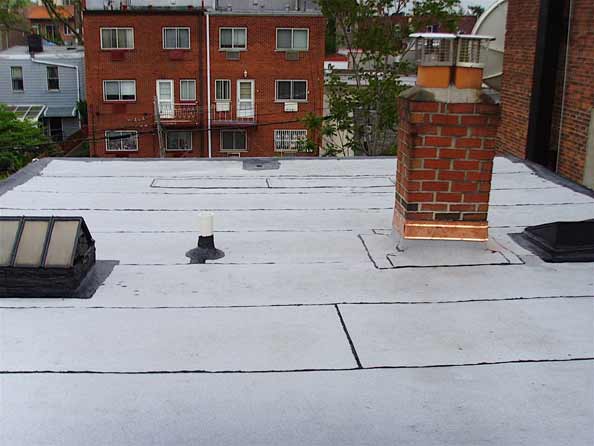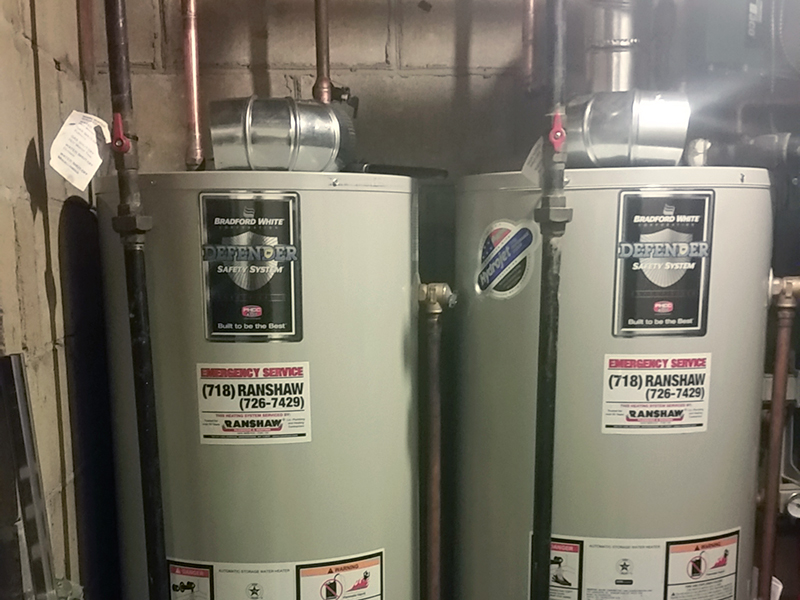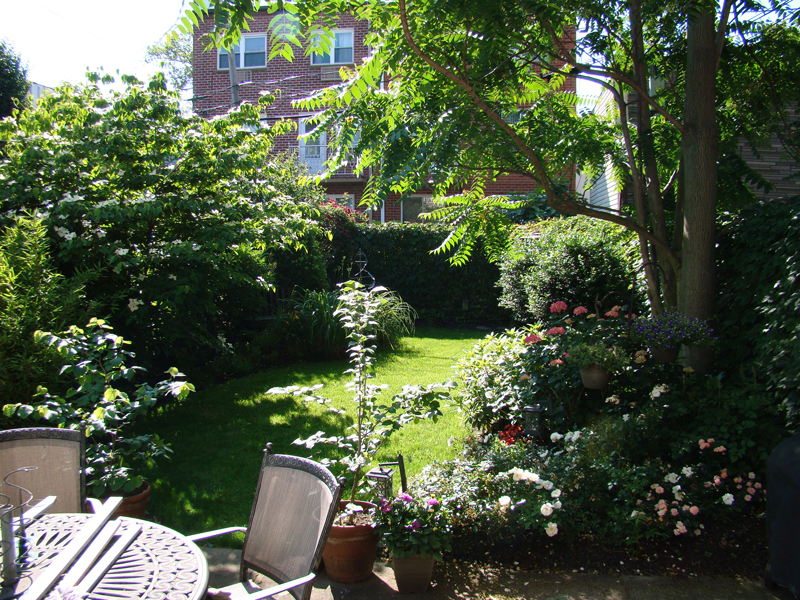By RoofMaster NYC (roofmasternyc.com)
 Utilizing a true white granule based roofing material, the roof on 31-81 now delivers both long-wearing reliability and energy savings to those living under it. Among other benefits realized after installation, the building is cooler in the summers, cleaner and as a result, consumes less energy. In the United States, dwellings tended to be built with white roofs through the 1960s. Then, as air conditioning became widespread, cheap, and taken for granted, priorities shifted. It became popular to use darker roofing shingles, which more resembled wooden shingles and better concealed dirt and mold. The colored granules on typical “white” shingles made today are coated with only one-sixth as much white pigment as in the 1960s. Under the summer sun, modern roofs can become up to 20°F hotter than the old-style ones.
Utilizing a true white granule based roofing material, the roof on 31-81 now delivers both long-wearing reliability and energy savings to those living under it. Among other benefits realized after installation, the building is cooler in the summers, cleaner and as a result, consumes less energy. In the United States, dwellings tended to be built with white roofs through the 1960s. Then, as air conditioning became widespread, cheap, and taken for granted, priorities shifted. It became popular to use darker roofing shingles, which more resembled wooden shingles and better concealed dirt and mold. The colored granules on typical “white” shingles made today are coated with only one-sixth as much white pigment as in the 1960s. Under the summer sun, modern roofs can become up to 20°F hotter than the old-style ones.
What is a white roof?
A white roof is painted with solar reflective white coating and reflects up to 90% of sunlight (as opposed to traditional black roofs which reflect only 20%). A white roofs are a lot more than just white paint! White roofs’ benefits are measured partly according to the solar reflectance index, or SRI. A roof’s SRI is a measure of a surface’s ability to reflect solar heat. SRI measures reflectance (reflecting the sun’s rays) and thermal emittance (the roof’s ability to radiate absorbed heat). If you’ve ever worn a black t-shirt in the sun than you already understand that black’s reflectance is negligible and its emittance is zero. A white roof’s reflectance is as high as 90% and its emittance is 100%.
Why a White Roof?
A Heat Island is a metropolitan area which is significantly warmer than its surroundings. Heat islands do not primarily arise mainly from heat leaking out of cars, buildings, and factories. Rather, dark horizontal surfaces (such as flat roof surfaces in Queens) absorb most of the sunlight falling on them. Consequently, dark surfaces run hotter than light ones. The choice of dark colors has caused a problem of radiating heat both during the day and well after sunset. Based on the findings of GHCC heat island studies and NASA heat island research done in New York, Los Angeles, Chicago, Washington, and Atlanta, a white or nearly white roof has been shown to reflect solar radiation during the day and will not radiate much heat at night.
We are now paying dearly for this extra heat. Some studies have put the estimated energy to cool buildings in the U.S. at one sixth of the total energy consumed by the country (at an estimated annual power cost of $40 billion). Moreover, a 5°F heat island greatly raises the rate at which pollutants-nitrogen oxides and volatile organic compounds emanating from cars and smokestacks -“cook” into ozone, a highly oxidizing and irritating gas that is the main ingredient of smog.
Fortunately, steps can be taken that can go a long way toward dissipating urban heat islands. One solution is to use lighter colors for roofs and pavement. The other is to plant lots of trees, which have a two-fold benefit. First, they provide cooling shade. Second, trees, like most plants, soak up groundwater. The water then evapotranspires from the leaves, thus cooling the leaves and, indirectly, the surrounding air. A single properly watered tree can evapotranspirate 40 gallons of water in a day-offsetting the heat equivalent to that produced by one hundred 100-watt lamps, burning eight hours per day.
Additional Information
The White Roof Project NYC
A White Roof Project is low cost, easy to implement, relieves stress on the power grid, cuts down on smog, and creates tangible change for individuals, our communities, and even globally. White Roof Project has a three-pronged approach to executing its mission;
- Educate and activate,
- Contribute to white roof science and policy,
- Catalyze volunteers to complete painting projects in cities.
White Roofs Catch On as Energy Cost Cutters
New York Times by FELICITY BARRINGER JULY 29, 2009 ((PDF)
Relying on the centuries-old principle that white objects absorb less heat than dark ones, homeowners like the Waldreps are in the vanguard of a movement embracing “cool roofs” as one of the most affordable weapons against climate change.
Studies show that white roofs reduce air-conditioning costs by 20 percent or more in hot, sunny weather. Lower energy consumption also means fewer of the carbon dioxide emissions that contribute to global warming.
What is more, a white roof can cost as little as 15 percent more than its dark counterpart, depending on the materials used, while slashing electricity bills.
The following question was originally found on the Duro-Last roofing website:
Q: I live in a northern tier climate, and have heard that any summertime energy savings I realize with a white roof will be offset by winter heat loss. Doesn’t a black roof help me save money on heating costs?
A: In the northern tier of the United States, one might think that a black roof would provide a winter heating benefit to building owners. However, there are several factors that make any potential heat gain relatively immaterial:
- The laws of physics dictate that hot air will always rise. Thus, any heat that is transferred to the interior of a building structure from the outside will remain at the top of the structure, providing minimal heat savings.
- In all parts of North America, there are fewer hours of sunlight to affect energy costs. In fact, in some areas, there is a greater than a six-hour difference between peak-summer and peak-winter sunlight, meaning there is less sunlight available to contribute to a building’s potential warming. Plus, the angle of the sun is less direct, which also helps to minimize warming potential.
- In many areas, roofs are covered with snow for much of the winter, turning them “white” and eliminating any potential black roof heat gain.
- The energy required to air condition a building in the summer is usually considerably greater than the energy to heat it in the winter, making the potential for summer energy cost savings much greater with a highly reflective white roof than winter savings with a heat absorbing black roof.



